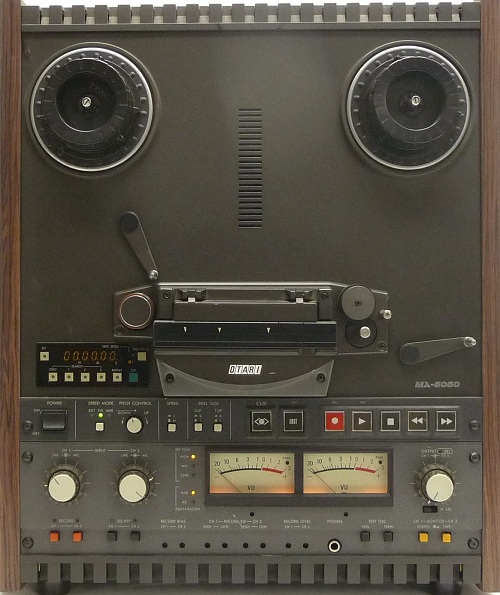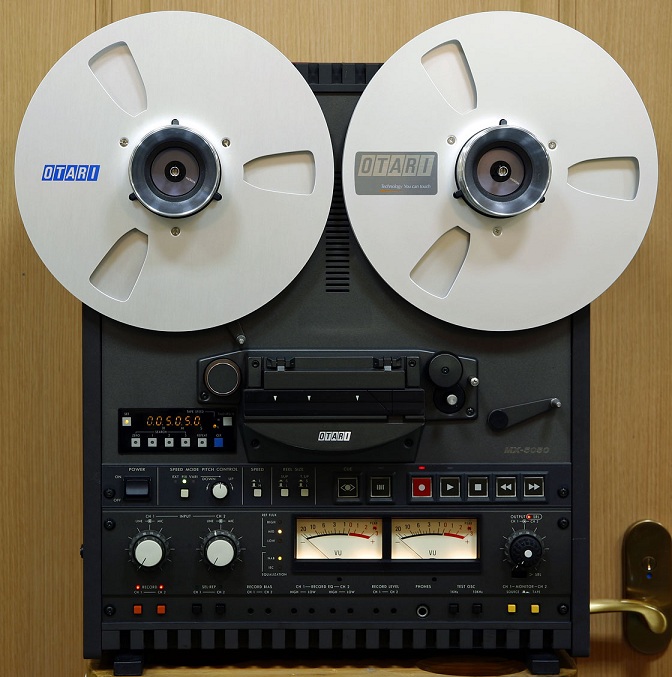Otari MX-5050 BIII Tape Machineine
Message Board - Otari MX-5050 BIII General Discussion
The MX5050 BIII has long been the standard in 1/4” 2 track analog recorders. It features an optimized three-head design and transformerless balanced inputs and outputs to provide superior frequency response, low distortion and high signal-to-noise performance under the most demanding conditions. Record setup adjustments can be made from the front panel, and a convenient built-in oscillator provides test tones for calibration/maintenance.
The direct drive capstan motor is servo-controlled, and an integral microprocessor governs tape handling, including dynamic braking, motion sensing and transport logic. A built-in mini-autolocator provides three one-touch cue-point memories, search zero, and a repeat function. The tape timer display shows tape time in Hrs/Min/Sec., as well as tape speed in inches per second and percentage of tape speed. Capstan speed can be varied by ±20% in 0.01% steps using the built-in "pitch" control. Time-code editing using a synchronizer is accomplished via the 37-pin Otari standard parallel interface.

The extremely rugged mechanical construction includes a 1/4" deckplate with cast aluminum side panels and steel support members. All circuit boards are designed to swing out or unplug for quick service access.
SYSTEM HIGHLIGHTS
·Positive-action transport controls
·Balanced transformerless XLR l/Os
·DC capstan.
·Quartz PLL servo-controlled
·Built-in mini-autolocator
·Rehearse function
·Automatic monitor switching
·Built-in test oscillator and external oscillator input
·Variable pitch control (±20%)
·Front panel record setup adjustments
·1/4" deck plate with cast aluminum side panels and steel support members

Otari MX5050 BIII Tape Machine
Do you have content, to add, about the Otari MX5050 BIII Tape Machine or associated topics? Please feel free to Share it, here!
Return from Otari MX5050 BIII Tape Machine to Magnetic Tape Recorders and Reproducers Return from Otari MX5050 BIII Tape Machine to History of Recording - Homepage |
